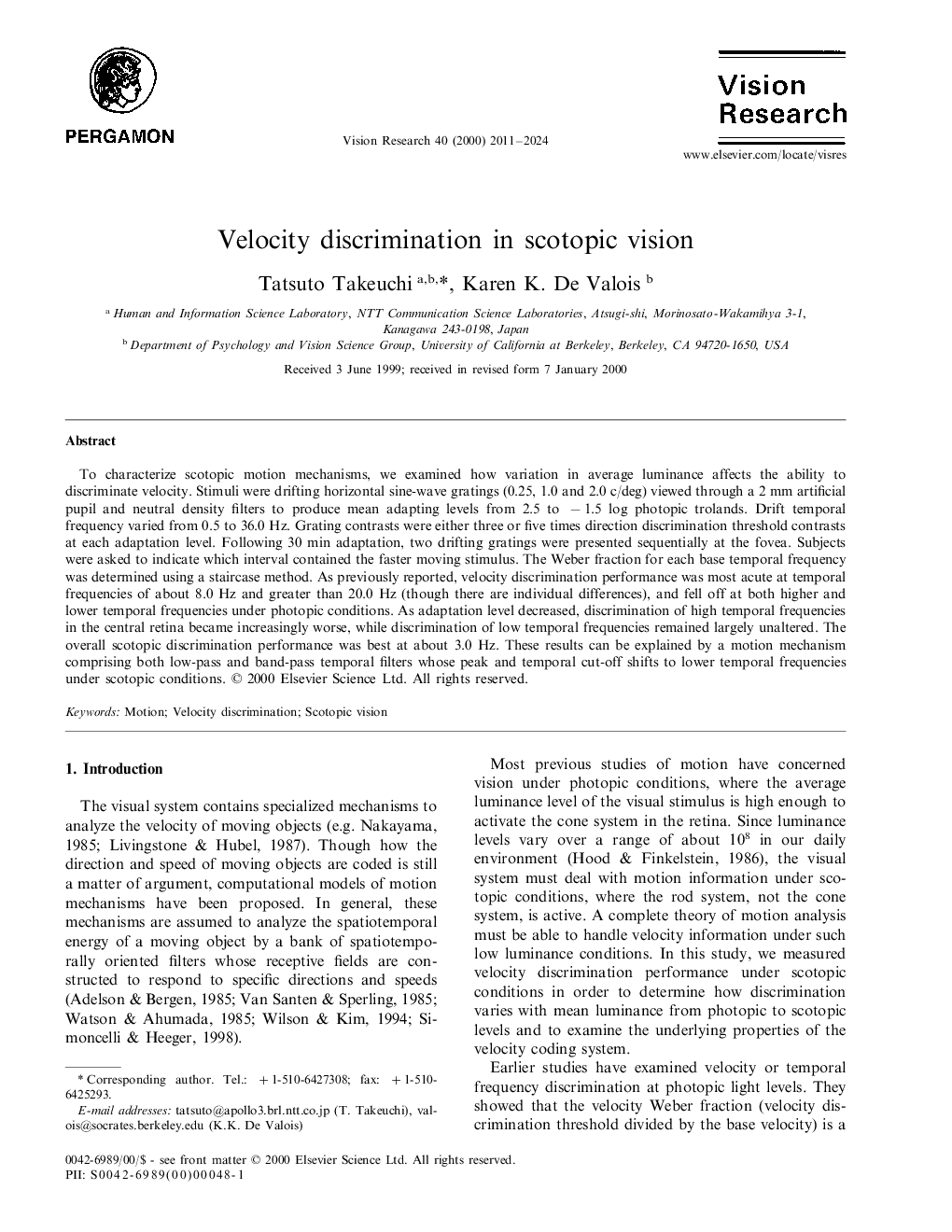| Article ID | Journal | Published Year | Pages | File Type |
|---|---|---|---|---|
| 4037434 | Vision Research | 2011 | 14 Pages |
To characterize scotopic motion mechanisms, we examined how variation in average luminance affects the ability to discriminate velocity. Stimuli were drifting horizontal sine-wave gratings (0.25, 1.0 and 2.0 c/deg) viewed through a 2 mm artificial pupil and neutral density filters to produce mean adapting levels from 2.5 to −1.5 log photopic trolands. Drift temporal frequency varied from 0.5 to 36.0 Hz. Grating contrasts were either three or five times direction discrimination threshold contrasts at each adaptation level. Following 30 min adaptation, two drifting gratings were presented sequentially at the fovea. Subjects were asked to indicate which interval contained the faster moving stimulus. The Weber fraction for each base temporal frequency was determined using a staircase method. As previously reported, velocity discrimination performance was most acute at temporal frequencies of about 8.0 Hz and greater than 20.0 Hz (though there are individual differences), and fell off at both higher and lower temporal frequencies under photopic conditions. As adaptation level decreased, discrimination of high temporal frequencies in the central retina became increasingly worse, while discrimination of low temporal frequencies remained largely unaltered. The overall scotopic discrimination performance was best at about 3.0 Hz. These results can be explained by a motion mechanism comprising both low-pass and band-pass temporal filters whose peak and temporal cut-off shifts to lower temporal frequencies under scotopic conditions.
